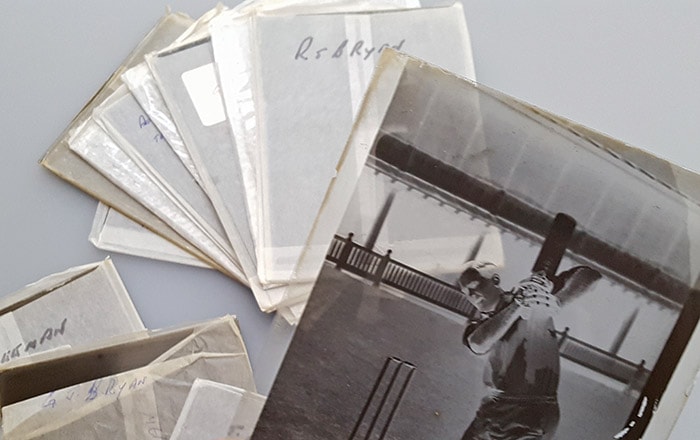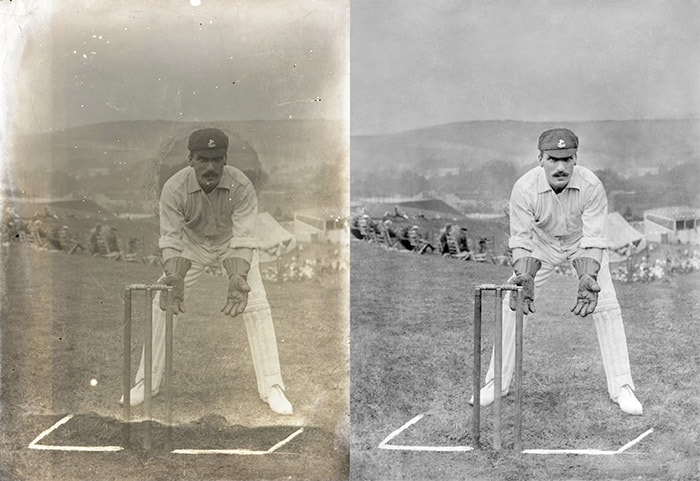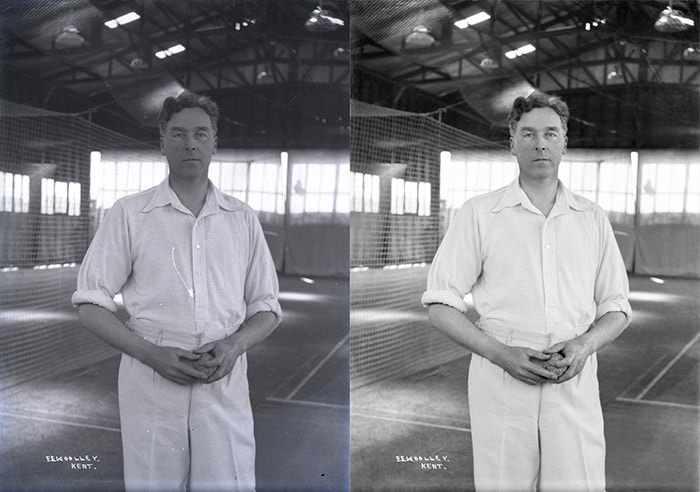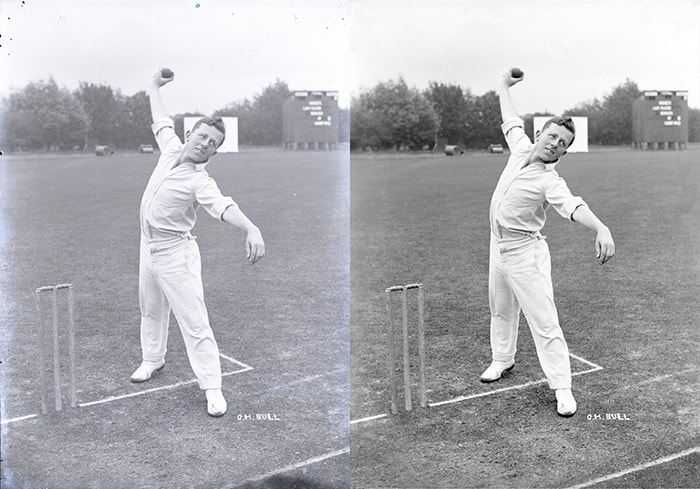
Paul Lewis, a collector of Kent County Cricket Club imagery, had a large batch of glass plate negatives which he wanted scanning.

A selection of Kent Cricket glass plate negatives
Here is what those moments mean to Paul:
“I have an interest in the history of Kent County Cricket Club, and find the photographs in books about the club really bring the stories to life.
When I came into possession of some glass plate negatives of teams and players taken from 1900 to 1930s, I was keen to have photographs developed because I could tell they were quite rare just by holding them to the light. Having got in touch with Nick, he scanned the glass plate negatives and restored the damaged photos.
1909 Kent County Cricket Team Photo
The level of detail in the finished product is astonishing, you can literally see the stitching pattern on the cricket jumpers. With most of the photographs having been taken in the between 1900 and the 1930’s, I didn’t expect the results to be anywhere near this good. The service Nick provides is really very special.
Colin Blythe who was killed in 1917 on the Western Front
One striking image is of Colin Blythe who was killed in 1917 on the Western Front, which reinforces the feeling of history being revealed and preserved a hundred years on.”

F. Hulsh – Kent Cricketer. Showing before and after restoration

F. E. Woolley – Kent Cricketer. Before and after restoration

C. H. Bull – Kent Cricketer. Before and after restoration
If you are interested in reading more about the history of Kent Cricket, check out Paul’s book ‘For Kent and Country: A Testimony to the Contribution Made by Kent Cricketers During the Great War‘
To see more moments being restored, you can find me on Instagram, twitter and facebook.
© Photo Restoration Services | Kent, UK
One thought on “Scanning glass plate negatives of Kent County Cricket Club”